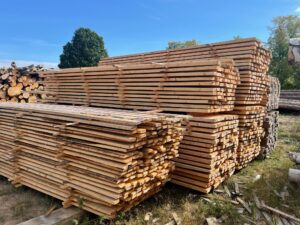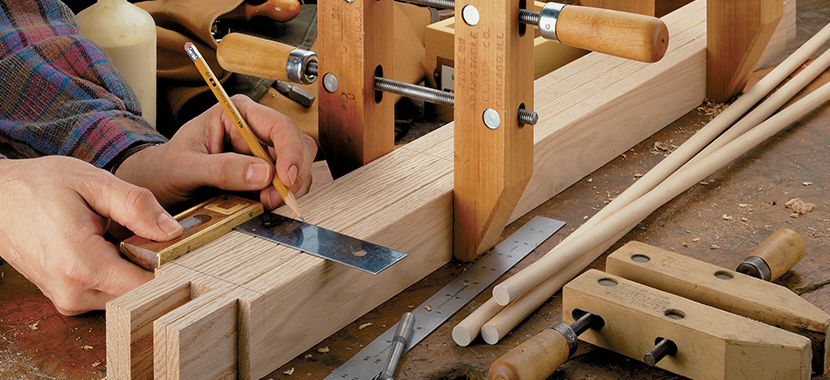When buying lumber for your project, understanding wood grades is essential to ensure you select the right material for your needs. Wood grades indicate the quality, appearance, and suitability of the wood for different applications. Here’s a guide to help you understand wood grades and what to look for when purchasing lumber.

1. What Are Wood Grades?
Wood grades classify lumber based on its quality, including factors like strength, appearance, and the number and size of knots or other imperfections. Grading systems can vary depending on the type of wood (hardwood or softwood) and its intended use (structural, aesthetic, etc.).
- Hardwood Grades: Typically graded for appearance and quality, hardwoods are used in furniture, cabinetry, and flooring.
- Softwood Grades: Often graded for strength and structural integrity, softwoods are commonly used in construction and framing.
2. Hardwood Grades
Hardwoods, such as oak, maple, and walnut, are graded based on the wood’s appearance, including the presence of defects like knots, checks, and color variations. Here are the primary grades:
- FAS (Firsts and Seconds): This is the highest grade of hardwood, offering the best appearance with minimal defects. FAS lumber is ideal for high-end furniture and cabinetry where a flawless finish is desired.
- Select: Slightly lower than FAS, Select grade lumber may have minor defects but still offers a good appearance. It’s suitable for fine furniture and interior woodwork.
- #1 Common: This grade has more visible defects, such as knots and mineral streaks, but still provides a solid appearance. It’s often used for cabinets, flooring, and less visible parts of furniture.
- #2 Common: This grade has more pronounced defects and is typically used in applications where appearance is less critical, such as for framing or utility purposes.
3. Softwood Grades
Softwoods, such as pine, fir, and cedar, are generally graded for structural purposes, though appearance can also be a factor. The grading system for softwoods is different from hardwoods and often focuses on strength and load-bearing capacity:
- Construction Grades: Softwoods are commonly graded as Select Structural, No. 1, No. 2, and No. 3, based on their strength and suitability for structural applications.
- Select Structural: The highest grade, used for critical structural applications requiring maximum strength.
- No. 1: Strong and relatively free of defects, used in load-bearing applications.
- No. 2: Contains more knots and imperfections but is still suitable for many structural uses.
- No. 3: The lowest structural grade, used in applications where strength is less critical, such as for temporary structures.
- Appearance Grades: Softwoods are also graded based on appearance, especially for applications like siding, decking, and trim.
- Clear: High-quality softwood with minimal knots and a smooth appearance, used in visible applications.
- Knotty: Characterized by visible knots, this grade is used where a rustic appearance is desired.
4. What to Look for When Buying Lumber
When selecting lumber, consider the following factors to ensure you choose the right grade for your project:
- Intended Use: Determine whether the lumber will be used for structural purposes or for visible, aesthetic applications. Structural projects require higher strength grades, while visible projects benefit from higher appearance grades.
- Appearance: For projects where the look of the wood is important, such as furniture or trim, choose higher-grade lumber with fewer knots, blemishes, or color variations.
- Strength and Durability: For construction and framing, prioritize grades that offer the necessary strength and durability, such as Select Structural or No. 1 grade softwood.
- Moisture Content: Ensure the wood has been properly dried and has the appropriate moisture content for your environment and intended use. Kiln-dried lumber is less likely to warp or shrink after installation.
- Size and Dimensions: Check that the lumber meets your size and dimension requirements, and consider whether you need rough or surfaced lumber based on your project needs.
- Budget: Higher grades of lumber typically come at a higher cost. Balance the need for quality with your budget to find the best grade for your project.
5. Common Applications by Wood Grade
- High-End Furniture: Use FAS or Select grade hardwoods for a flawless finish and superior appearance.
- Cabinetry: #1 Common hardwood or Select softwood can provide a balance of quality and cost.
- Framing and Construction: No. 1 or No. 2 grade softwood is ideal for strength and durability in structural applications.
- Outdoor Projects: Choose appearance-grade softwoods like Clear Cedar for decking and siding where both durability and aesthetics matter.
Conclusion
Understanding wood grades is crucial when selecting lumber for your project. By choosing the right grade, you ensure that your wood will meet the structural, aesthetic, and durability needs of your project. Whether you’re building a piece of furniture, constructing a house, or crafting a decorative item, knowing what to look for in wood grades will help you make the best choice.


Leave A Comment